The 1980s, a decade synonymous with bold experimentation, from groundbreaking music to daring fashion, also revolutionized the automotive landscape. Amidst iconic muscle cars and innovative designs from giants like Ford, Chevrolet, and Lamborghini, emerged a unique, often overlooked contender: the Merkur XR4Ti. Debuting in North America in 1985 and bowing out in 1989, the Merkur XR4Ti remains a fascinating piece of automotive history, deserving of rediscovery by enthusiasts today.
You might be forgiven for not immediately recalling the Merkur XR4Ti. Perhaps it faded from memory, or maybe it simply didn’t capture your attention in its time. However, this distinctive hatchback possesses a certain allure that warrants a second look. We delve into the often-forgotten aspects of the Merkur XR4Ti, exploring its design philosophy, powertrain, unique attributes, and why it represents a compelling, under-the-radar classic car option.
To ensure accuracy and provide contemporary insights, the information presented here is compiled from reputable sources including manufacturer specifications, automotive authorities like FuelEconomy.gov and NHTSA, and collector car market platforms such as Bring A Trailer and Classic.com.
Rediscovering the Merkur XR4Ti: More Than Meets the Eye
A Ford in Disguise: The Merkur Badge Explained
The Merkur XR4Ti’s striking hatchback silhouette sparks immediate discussion about its aesthetic appeal. Its boxy yet undeniably sporty stance sets it apart, but the “Merkur” badge on the hood hints at a more intricate story.
Beneath the surface, the Merkur XR4Ti is fundamentally a Ford Sierra XR4Ti, adapted for the American market. This European Ford model was re-engineered with a more potent engine, a revised suspension system, and rebranded under the Merkur name. This wasn’t a completely novel creation from Ford, but rather a strategic adaptation of an existing platform for a new audience.
Key Exterior Design Elements of the Merkur XR4Ti:
- Low-slung, aerodynamic nose
- Rectangular, rounded-edge headlights
- Sweeping, expansive windshield
- Pronounced wheel arches and robust bumpers
- Softly rounded body contours
The Merkur XR4Ti may not embody the timeless elegance of a Jaguar E-Type, but it exudes a nostalgic charm reflective of the automotive industry’s experimental spirit in the 1980s. Manufacturers were pushing boundaries and exploring new concepts, even if it meant re-imagining existing models for different markets. The Merkur XR4Ti stands as a testament to this era of automotive innovation and adaptation.
Turbocharged Performance: The Heart of the Merkur XR4Ti
Ford’s Engine Expertise Under the Hood
Unlike its European Ford Sierra counterpart, which offered a range of engines including a Cologne V6, the Merkur XR4Ti for the North American market was exclusively equipped with a spirited turbocharged engine. This powertrain choice positioned the XR4Ti as a performance-oriented hatchback, offering engaging driving dynamics at a relatively accessible price point for a classic car.
Merkur XR4Ti Performance Specifications:
| Feature | Specification |
|---|---|
| Engine | 2.3-Liter Turbocharged Inline-Four |
| Transmission | Five-Speed Manual/Three-Speed Automatic |
| Horsepower | 175 HP (Manual)/145 HP (Automatic) |
| Torque | 195 lb-ft |
| Drivetrain | Rear-Wheel Drive |
| Top Speed | (Unpublished) |
| 0-60 MPH Acceleration | 7.8 Seconds |
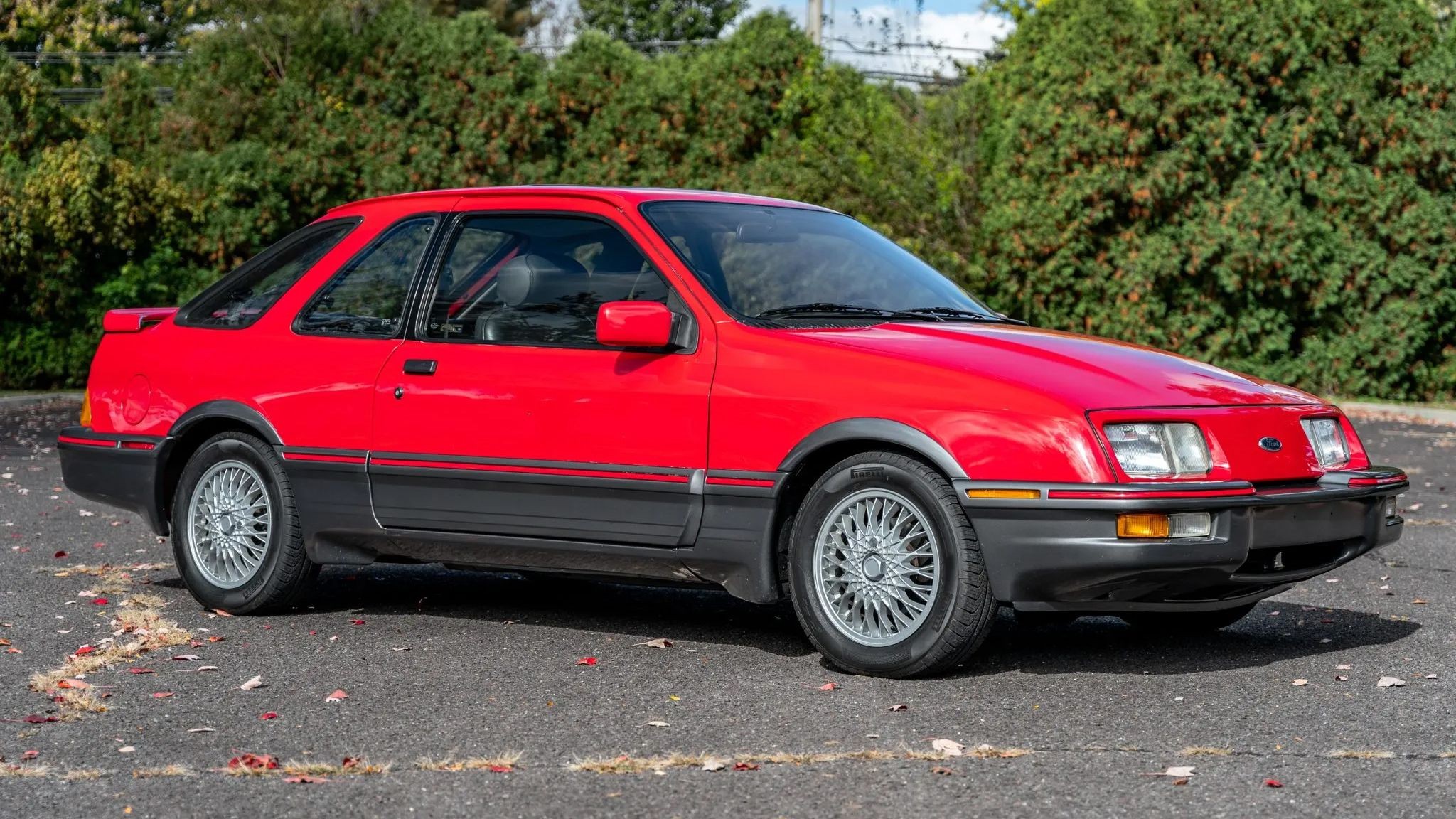
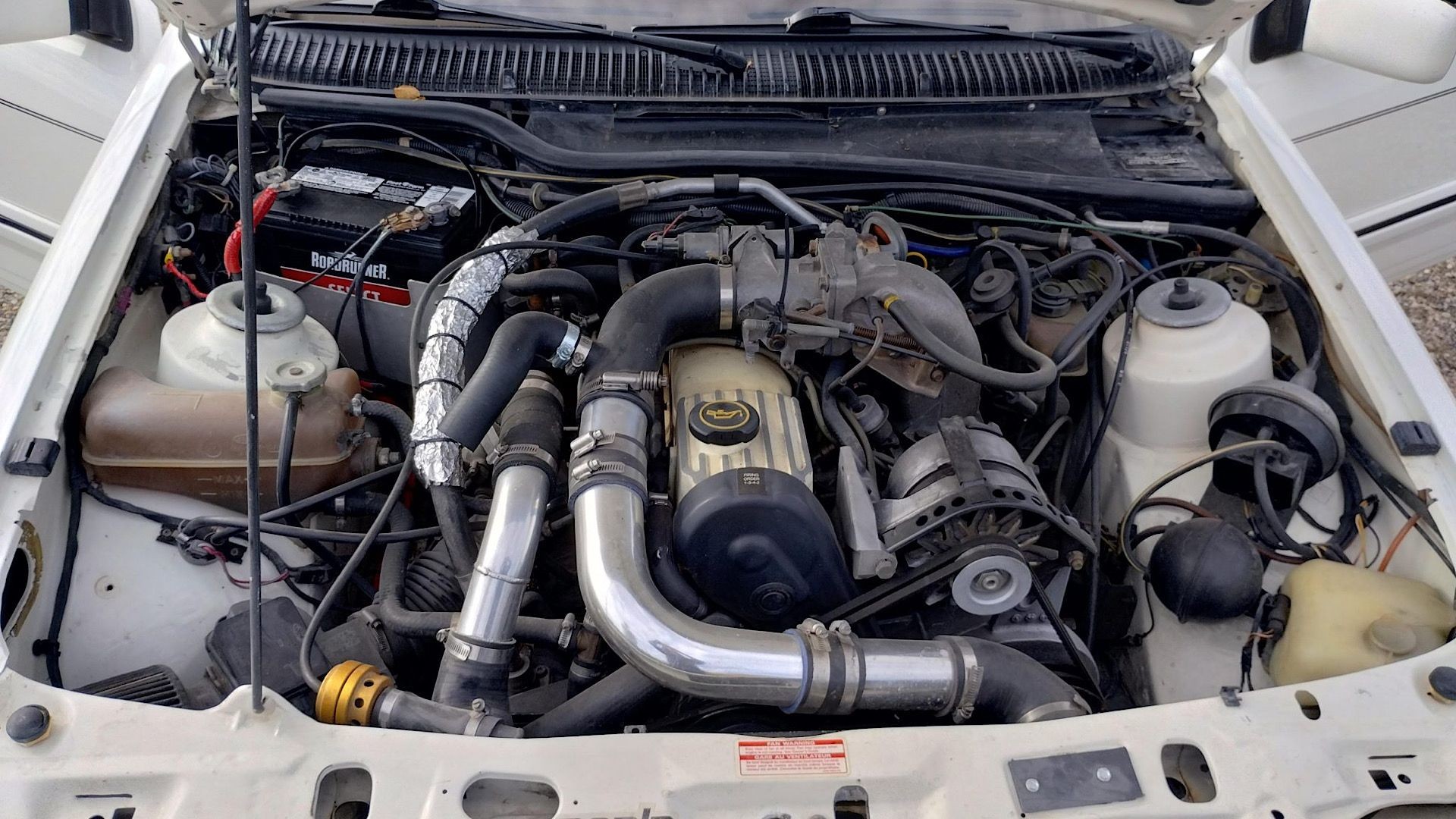
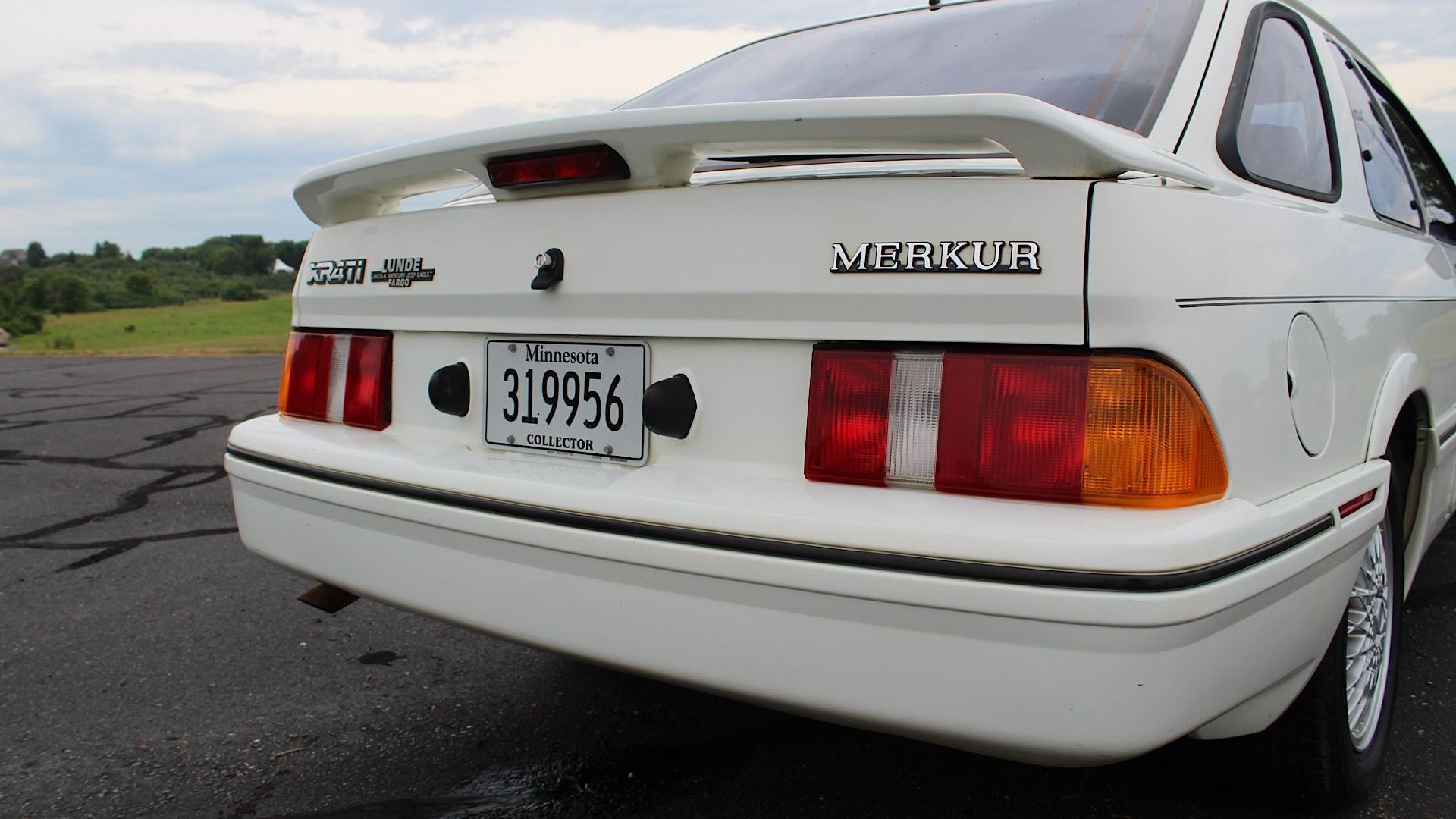
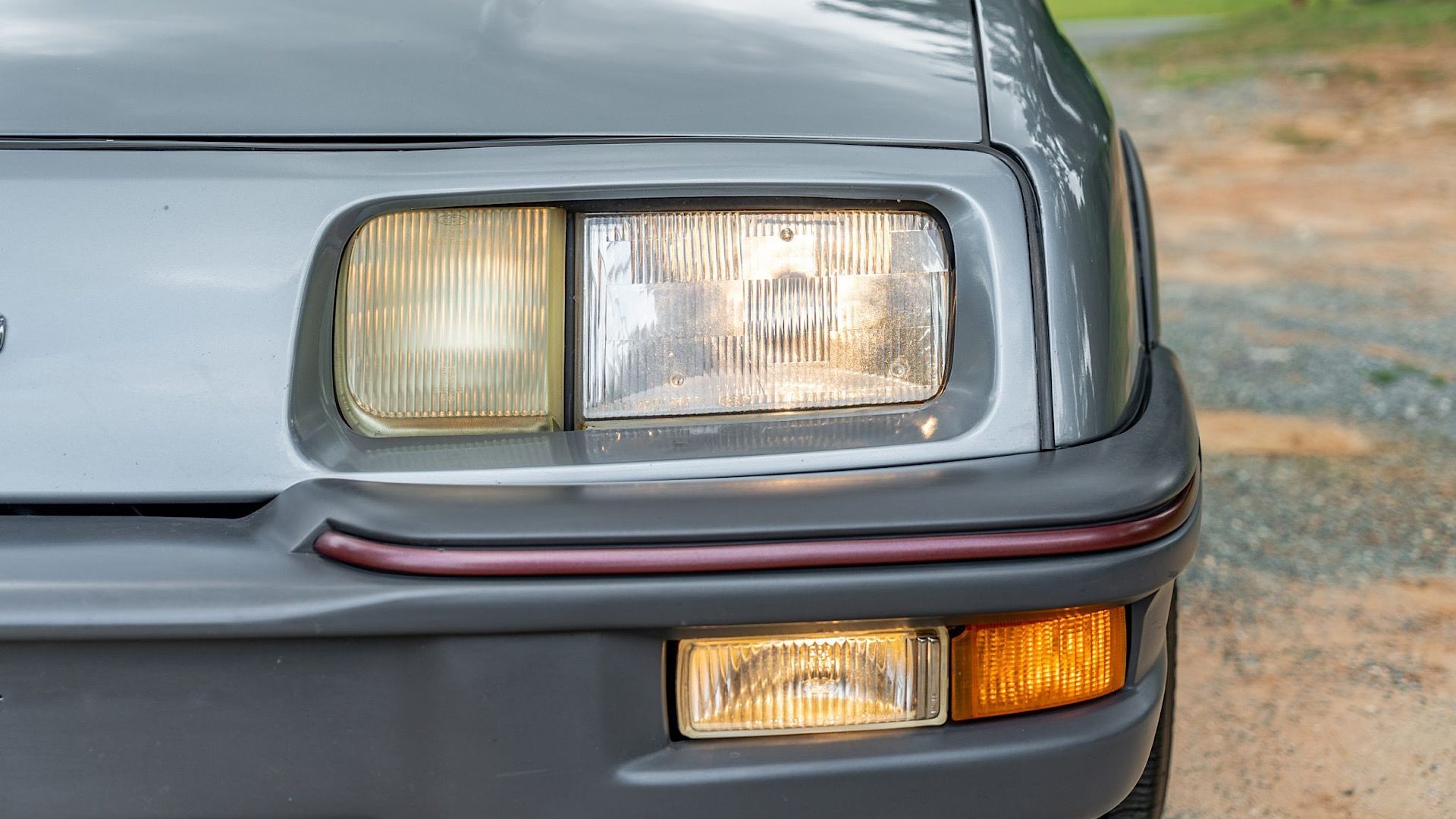
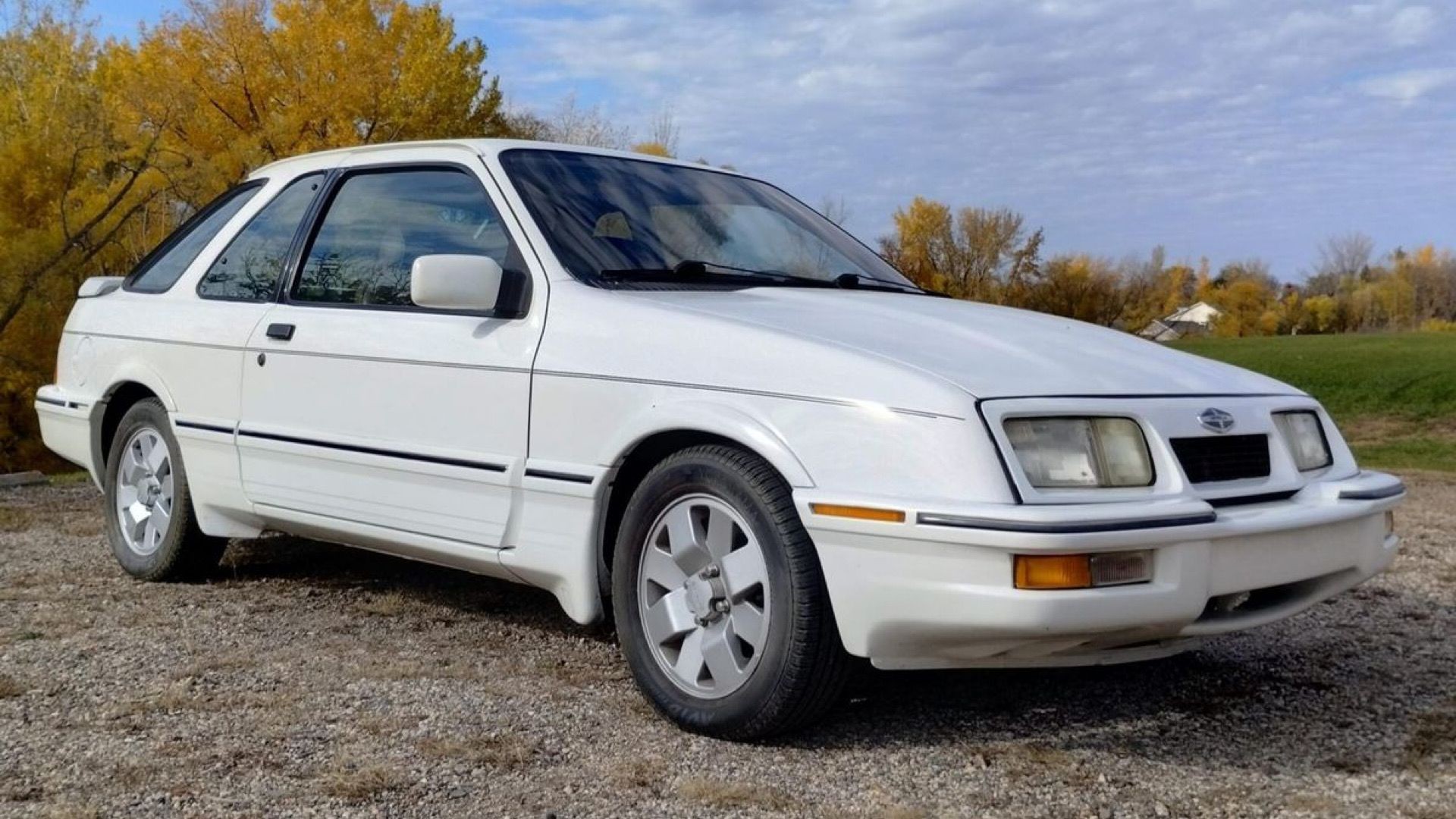

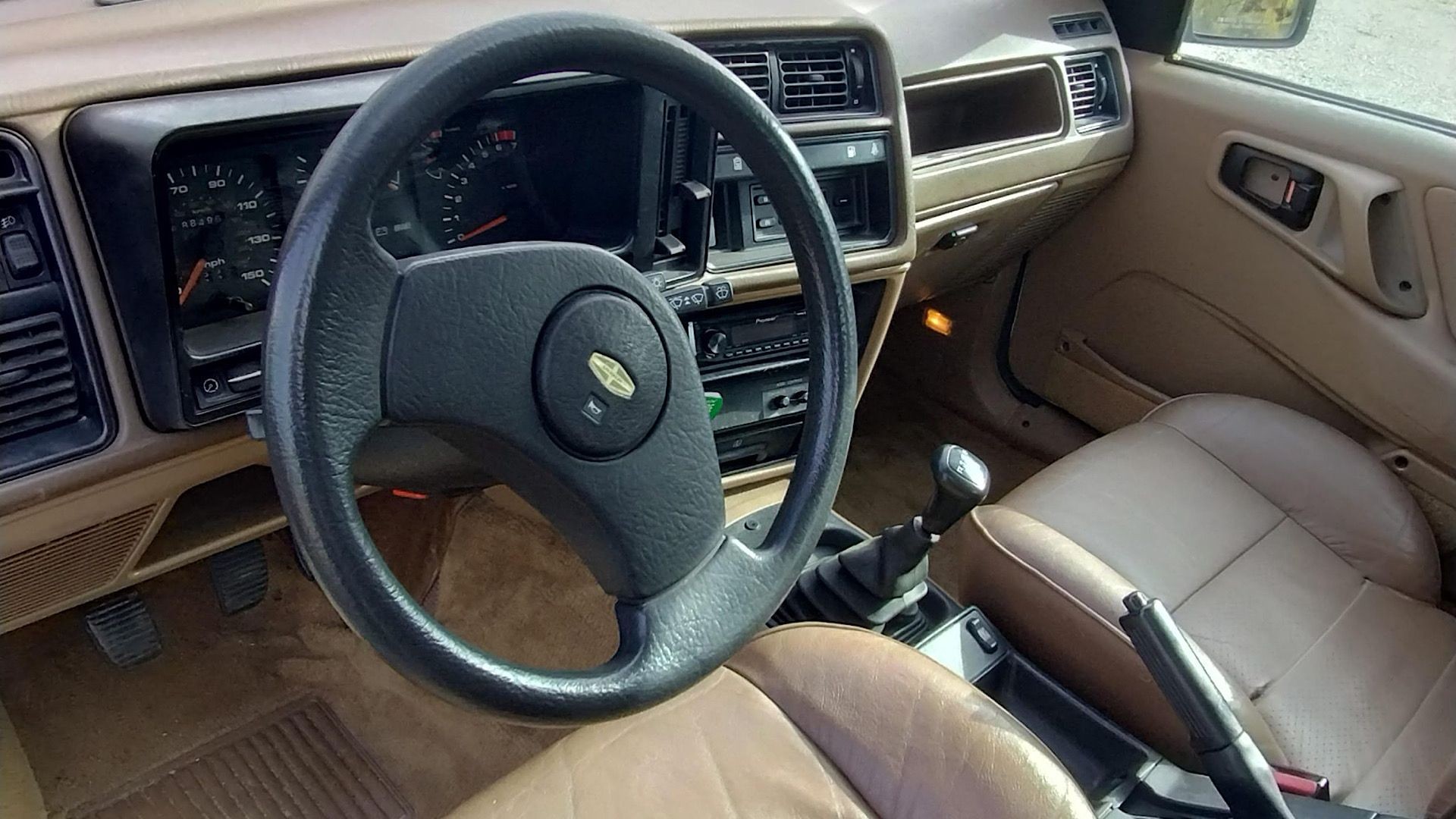

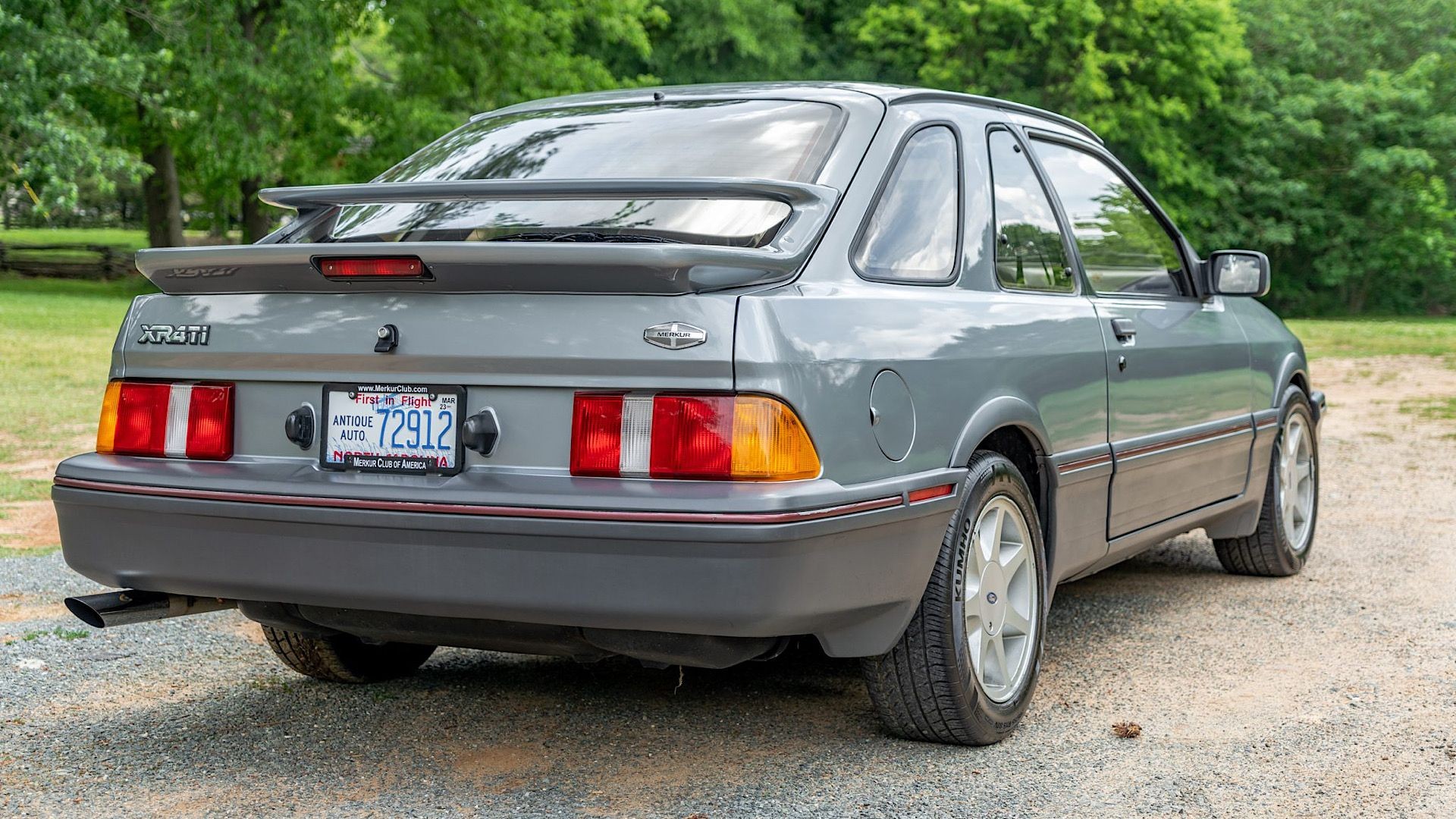
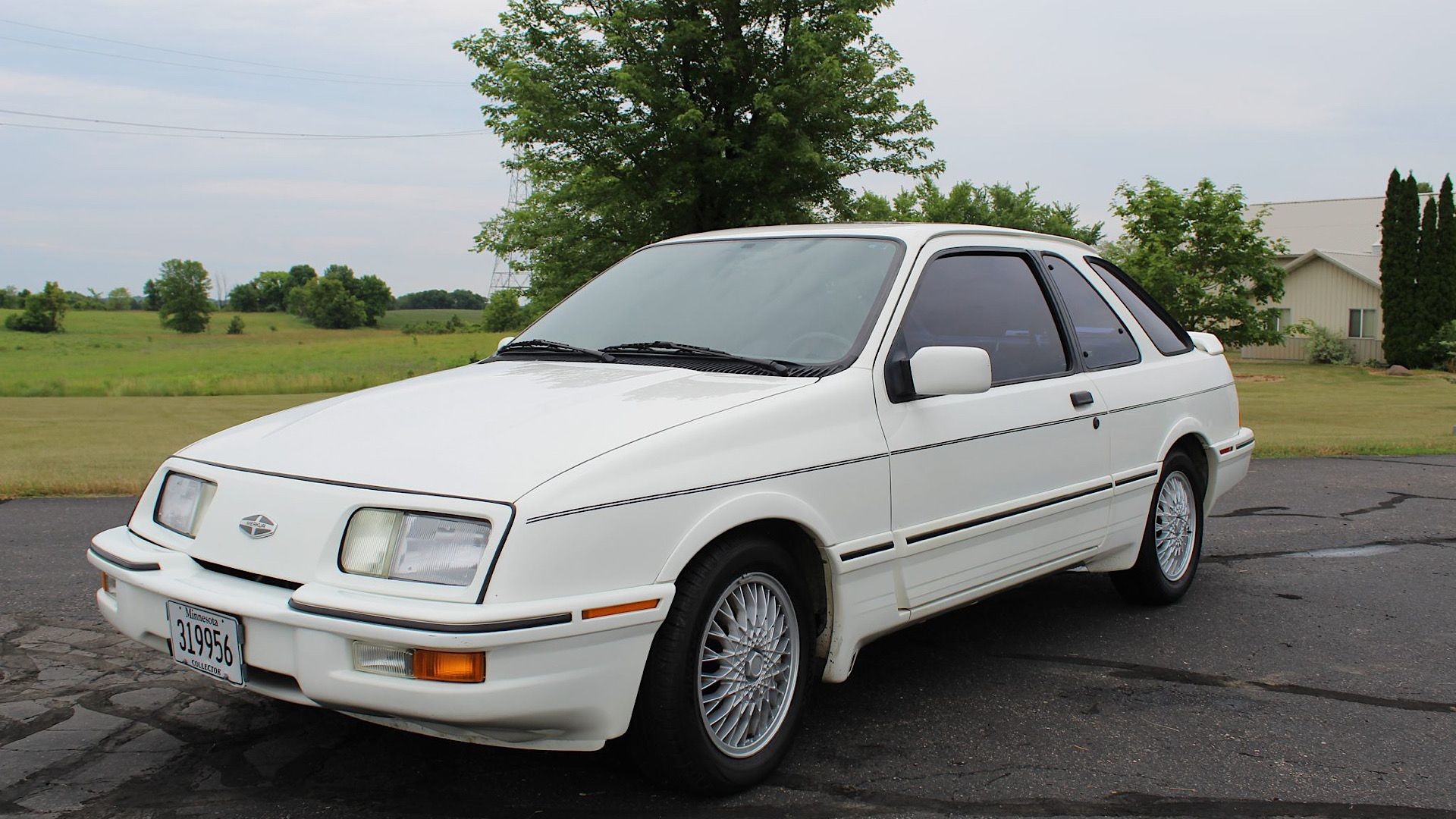
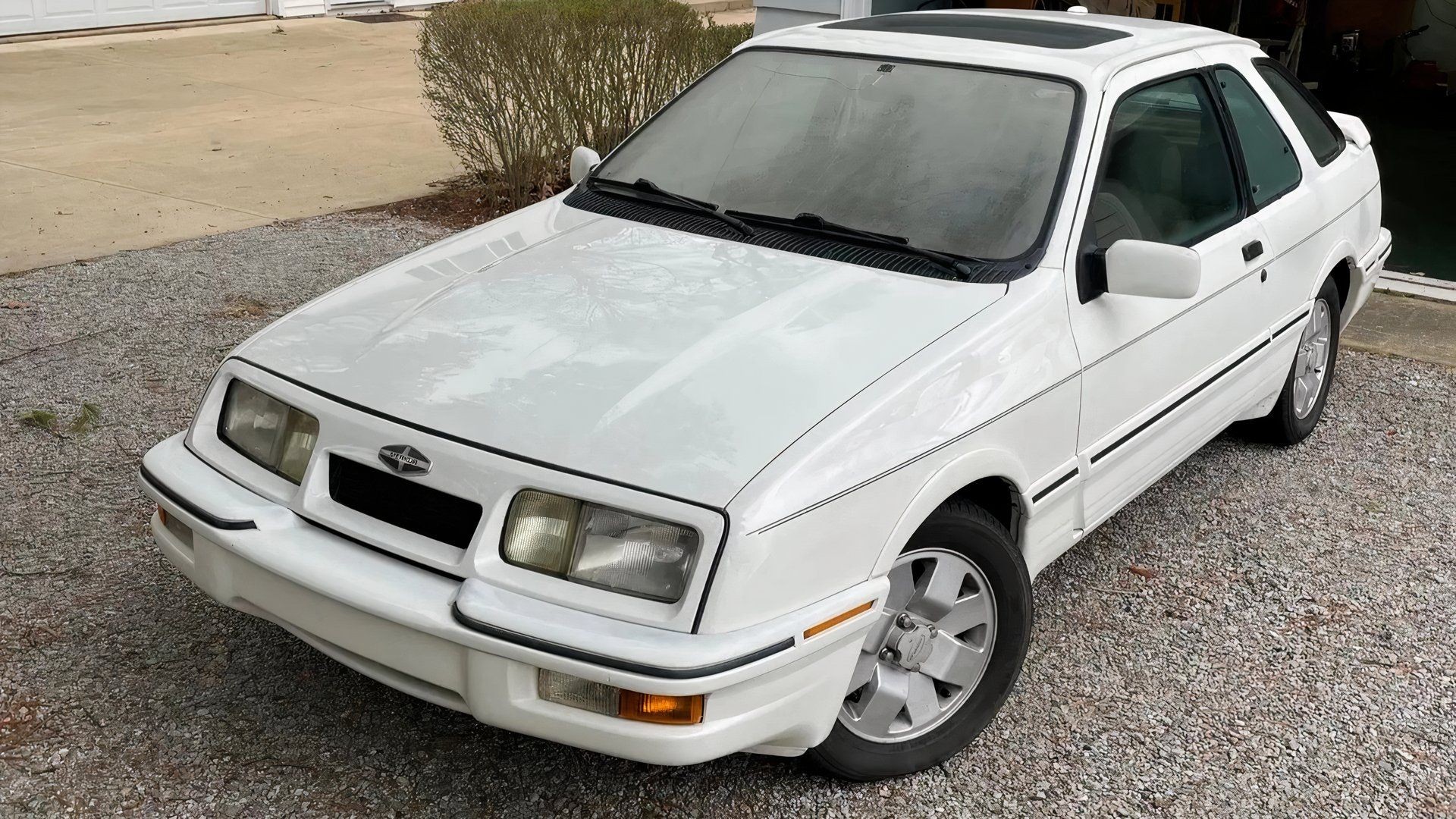
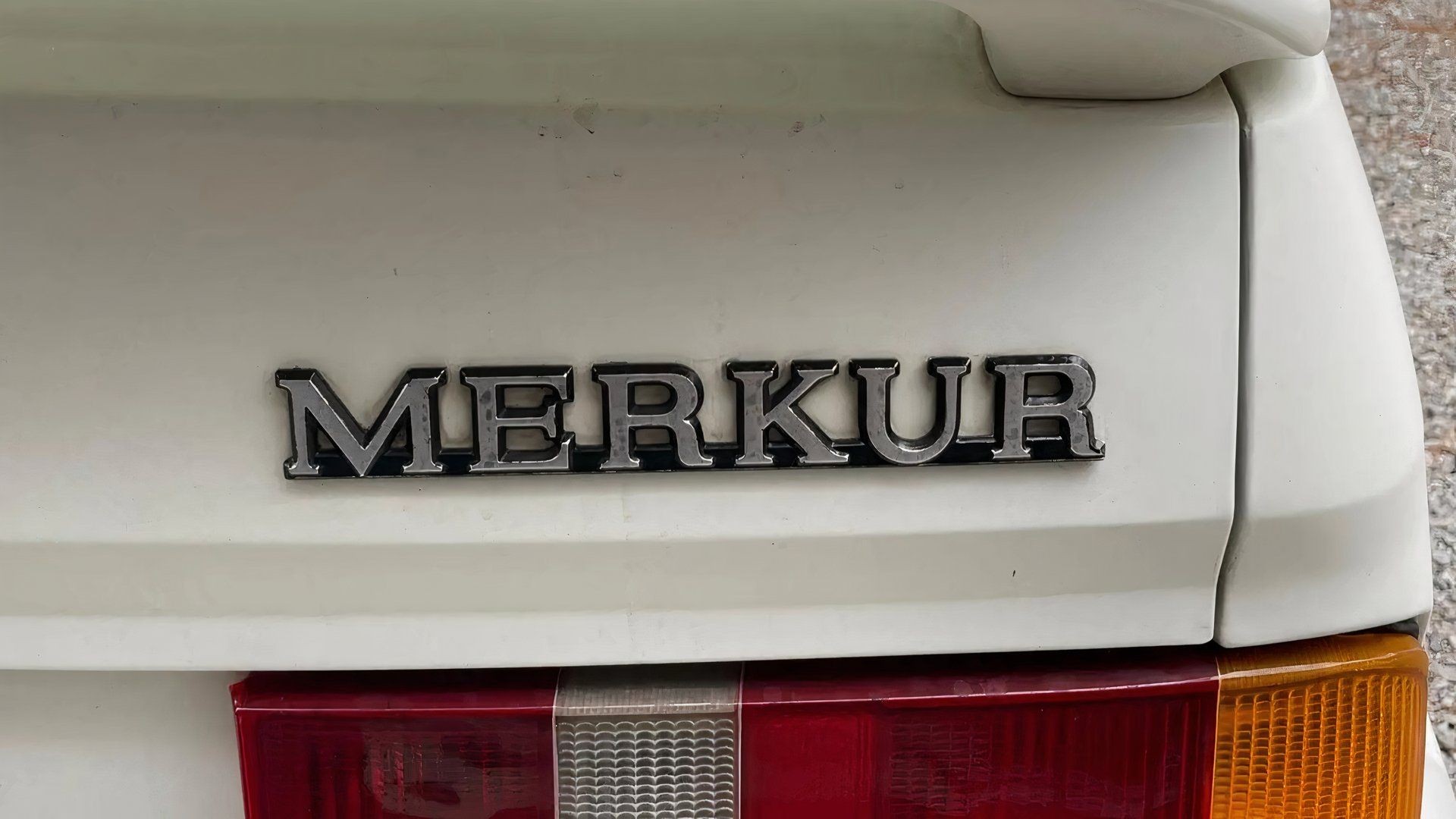
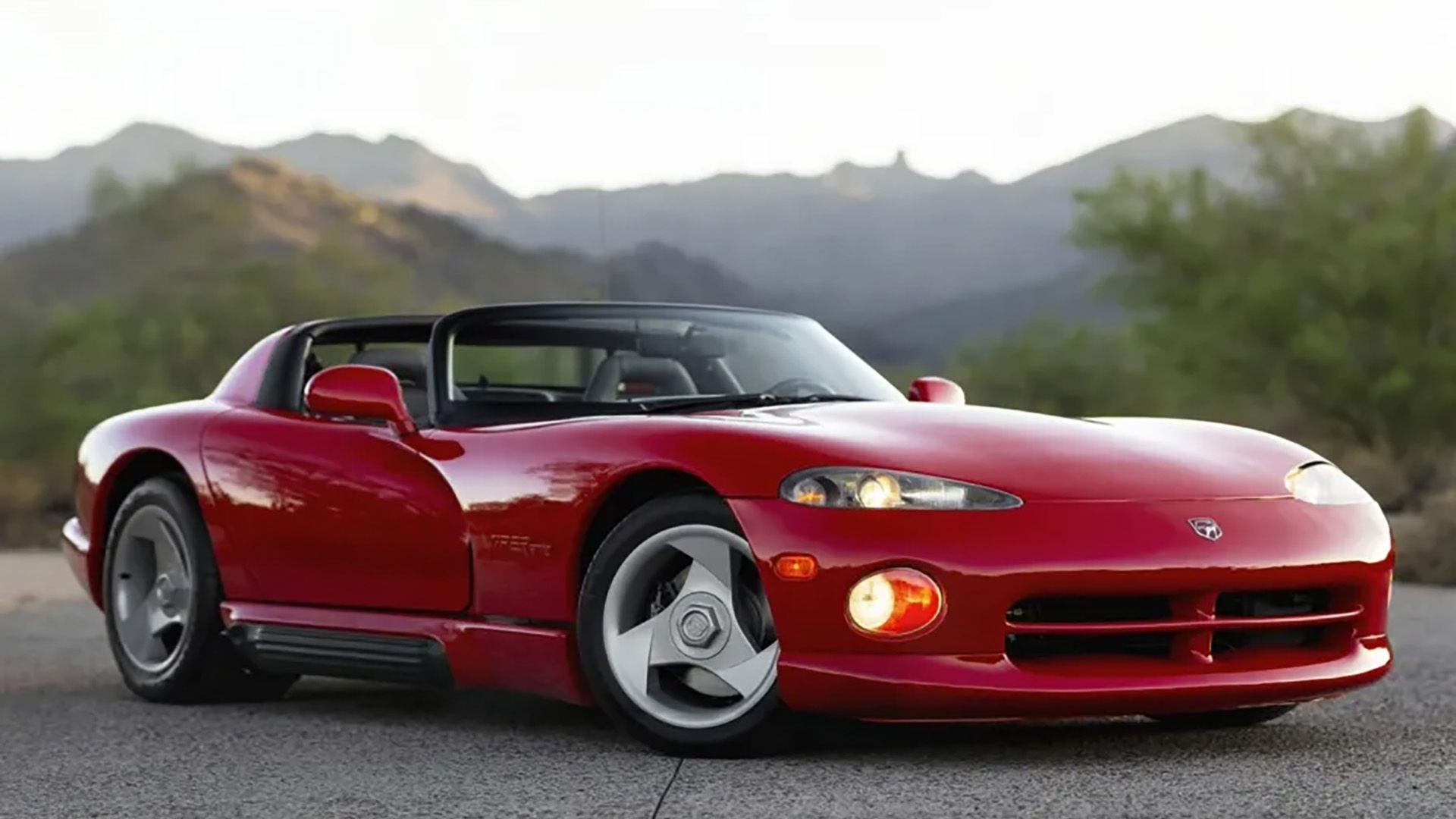
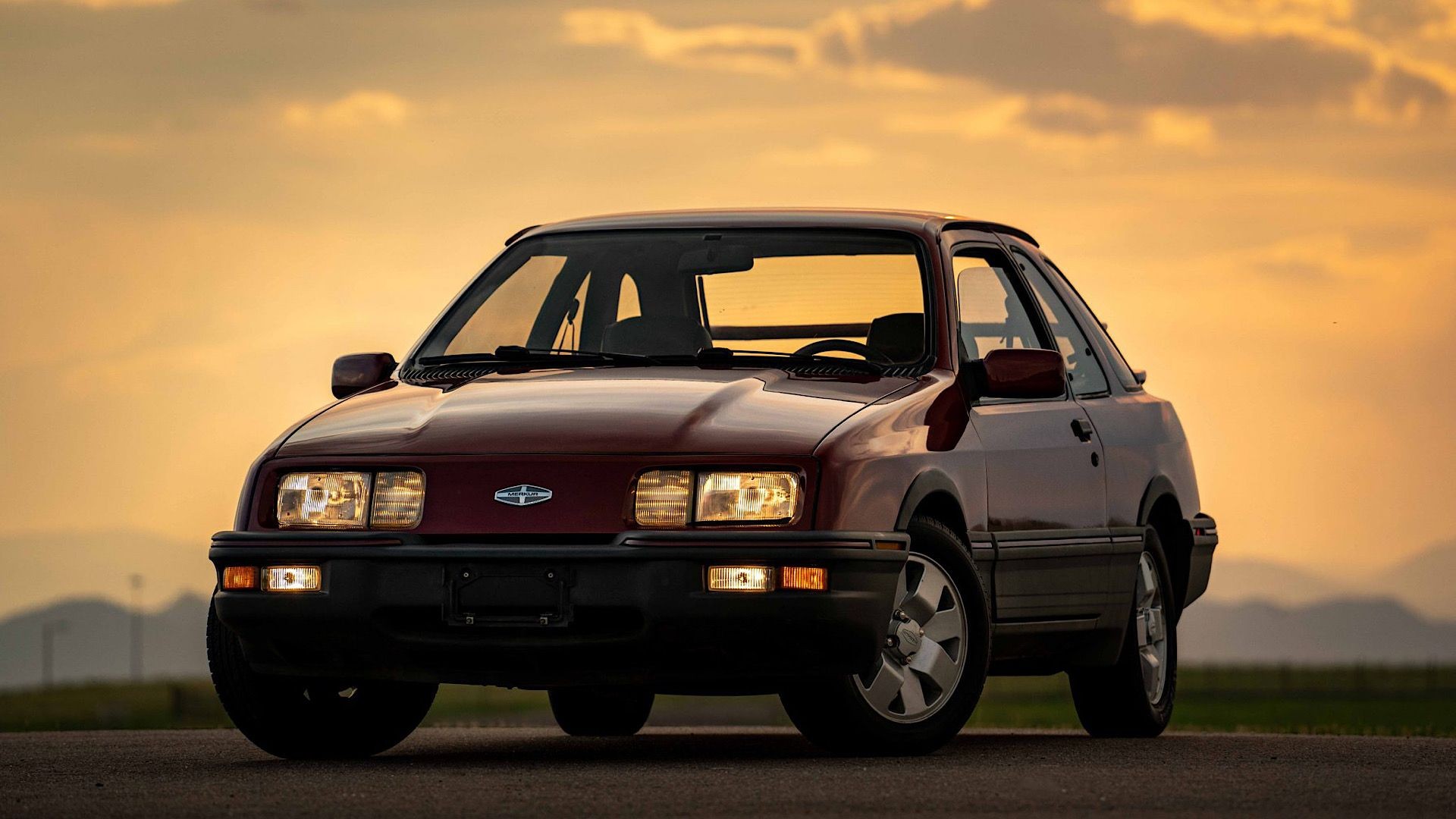
(Performance data sourced from Classic.com and Car & Driver)
While the Merkur XR4Ti might not rival the blistering speeds of some of the era’s fastest supercars, it delivered a satisfying level of performance and a distinct 1980s turbocharger experience. This blend of retro charm and punchy performance makes it an appealing option for enthusiasts seeking a classic with character.
Divergences from its European Sibling: Merkur vs. Ford Sierra XR4Ti
Tailored for the American Road
As established, the Merkur XR4Ti is closely related to the Ford Sierra XR4Ti. However, beyond a simple badge swap, several key distinctions set the two models apart, reflecting the adaptation of the European design for the specific demands and regulations of the North American market. These differences extend beyond just the engine and branding, influencing the car’s overall character and driving experience.
Key Distinguishing Features: Ford Sierra XR4Ti vs. Merkur XR4Ti:
- Engine Choice: Sierra offered inline-four and V6 options; Merkur exclusively featured the turbocharged inline-four.
- Nameplate: “Sierra” name avoided in the U.S. due to the GMC Sierra pickup truck.
- Safety Enhancements: Merkur unibody strengthened with side intrusion beams to meet US safety standards.
- Emissions Control: Merkur equipped with two catalytic converters, unlike the Sierra.
- Bumper Design: Merkur bumpers extended to comply with American impact regulations.
While sharing a visual resemblance, the Ford Sierra XR4Ti and Merkur XR4Ti incorporated significant engineering and design modifications, resulting in distinct vehicles tailored to their respective markets. These changes contributed to the Merkur’s unique identity and driving dynamics.
Comfort-Focused Suspension: Prioritizing Ride Quality Over Track Prowess
Tuned for American Roads, Not Race Tracks
Despite its rear-wheel-drive configuration and front-engine layout suggesting sporty potential, the Merkur XR4Ti’s suspension was deliberately tuned for comfort rather than outright performance handling. Designed for North American road conditions, the emphasis was placed on ride quality, a decision that drew mixed reactions from automotive critics and owners alike.
Merkur XR4Ti Suspension Highlights:
- Front: MacPherson struts, lower lateral links, concentric coil springs
- Rear: Semi-trailing arms with coil springs
- Rear anti-roll bar included
- Softer suspension calibration
Ford even enlisted racing legend Jackie Stewart to contribute to the Merkur XR4Ti’s handling development. Despite these efforts, some road tests were critical of the softer suspension setup. However, this choice underscores Ford’s intention to create an affordable performance hatchback that prioritized everyday usability and comfort for the American market, even if it meant compromising some track-oriented sharpness.
The Missing Intercooler: An Engineering Compromise?
Overlooked Component in the Turbo System
While turbocharging was a key feature of the Merkur XR4Ti, a notable omission was the intercooler. Intercoolers, though not strictly essential for turbocharged engines, contribute to improved fuel efficiency, turbocharger longevity, reduced emissions, and potentially enhanced engine reliability. The absence of an intercooler on the Merkur XR4Ti’s 2.3-liter inline-four raises questions, especially considering that a nearly identical engine in the 1983 Ford Mustang GT did incorporate one.
Merkur XR4Ti Engine Design Features:
- Cast iron engine block
- Two valves per cylinder
- Timing belt driven
- Single overhead camshaft
The precise reasons for omitting the intercooler from the XR4Ti remain somewhat unclear. Speculation points towards cost considerations, as the Merkur was intended to be an affordable performance car, and an intercooler might have been deemed a “luxury” feature. Alternatively, packaging constraints or weight reduction efforts could have played a role. Regardless of the rationale, the lack of an intercooler remains a distinctive, if debated, characteristic of the Merkur XR4Ti’s engineering.
Futuristic 80s Aesthetics: A Design Statement
Bold and Unconventional Styling
The Merkur XR4Ti’s boxy, almost science-fiction-inspired design language firmly plants it in the 1980s. This performance hatchback stands out with its unique blend of futuristic cues, European flair, and American market sensibilities. Its aesthetics, however, often polarize opinions within the automotive community, sparking debate about its visual appeal.
Merkur XR4Ti Design Highlights:
- Signature bi-plane rear spoiler
- Wraparound rear window design
- Large, prominent headlights
- Discreet air intake and grille
Inside, the XR4Ti’s cabin reinforces the blend of practicality and driver-focused design. A curved dashboard, substantial steering wheel, extended turn signal stalks, clear driver instrumentation, and a plethora of buttons and switches on the center console create a cockpit experience that is both functional and imbued with 80s technological optimism. The Merkur XR4Ti’s design, both inside and out, encapsulates the era’s forward-looking and sometimes unconventional automotive design trends.
Transmission Choices: Manual Engagement or Automatic Convenience
Catering to Driving Preferences
The Merkur XR4Ti offered buyers a choice between a manual and automatic transmission, appealing to a broader spectrum of driving styles and preferences. The standard transmission was a Getrag 5-speed manual gearbox, celebrated for its precise shifts and engaging driving feel. For those prioritizing ease of use, a 3-speed automatic transmission was also available.
Market Reception and Production Challenges:
- German production, coupled with a weak Deutschmark, impacted profitability.
- Limited sales figures, with approximately 40,000 units sold during its production run.
- Contemporary automotive journalists expressed lukewarm opinions on the XR4Ti.
- Short production lifespan, ceasing after only four model years.
Choosing the automatic transmission in the Merkur XR4Ti resulted in a reduced horsepower output compared to the manual version (a 30 horsepower difference). While not achieving the widespread popularity of models like the 1986 Toyota MR2, the Merkur XR4Ti, particularly in manual guise, provides a rewarding driving experience and possesses significant potential for modification and personalization.
Tuneability and Modification Potential: Unleashing Hidden Performance
A Platform for Customization
Throughout its production run, specialized tuners like Roush and Rapido developed enhanced versions of the Merkur XR4Ti. These modified XR4Tis even participated in various Grand Prix events across America and served as pace cars at the Detroit Grand Prix in 1986—remarkable achievements for a car that often faced critical reception. Like many classic cars, the Merkur XR4Ti offers considerable potential for modern performance upgrades, limited primarily by budget and time. This inherent tuneability is a major draw for classic car enthusiasts.
Common Merkur XR4Ti Modifications:
- Upgrading the soft factory suspension for firmer, sport-tuned components.
- Adding an intercooler to enhance turbocharger efficiency and power.
- Replacing the standard brakes with higher-performance, track-capable alternatives.
Owners seeking to amplify the XR4Ti’s performance have numerous avenues for customization, from refining the suspension and adding an intercooler to undertaking a full engine swap. With a growing community around iconic 1980s classic cars, a modified or even stock Merkur XR4Ti is sure to attract attention at car meets and events, showcasing its unique character and potential.
Affordable Classic Fun: Merkur XR4Ti Ownership
Accessible Entry into Classic Car Ownership
According to Classic.com, the average used price for a Merkur XR4Ti is approximately $10,543. Considering its distinctiveness, modification potential, relative rarity, and inherent fun factor, this average price positions the Merkur XR4Ti as an appealingly affordable classic car option. It offers a more budget-friendly entry point compared to more mainstream classics like Mustangs and Camaros, while still delivering a unique and engaging ownership experience.
Merkur XR4Ti Market Insights:
- Most recent online sale recorded over 7 months prior.
- Current online listings are scarce.
- Highest recorded sale price for a Merkur XR4Ti: $26,750.
- Only 19 online sales documented by Classic.com.
For mechanically inclined individuals who appreciate the quirky aesthetics of the 1980s, desire a seldom-seen vehicle, and seek a project car with upgrade potential, the Merkur XR4Ti presents a compelling, affordable classic car prospect—if one can be located for sale.
Underappreciated Classic Status: A Hidden Gem of the 80s
Economical and Unique Entry-Level Classic
Among the vast landscape of classic cars, many deserving models remain underappreciated. The Merkur XR4Ti is undoubtedly one of the most overlooked classics from the 1980s. Owning an XR4Ti offers not only driving enjoyment but also a relatively economical and safe classic car experience. NHTSA records indicate some owner complaints regarding the XR4Ti, but notably, no safety recalls have been issued. Common complaints often relate to engine cooling and electrical issues – perhaps reinforcing the earlier point about the missing intercooler!
The Merkur XR4Ti as a Unique 1980s Classic:
- Distinctive design rarely seen today.
- Full of unique quirks and character.
- Highly tuneable and modifiable platform.
- Reasonably powerful turbocharged engine.
- Strong dose of retro 80s nostalgia.
- Rarely encountered on modern roads.
FuelEconomy.gov data suggests a 1989 Merkur XR4Ti achieves around 19 mpg combined fuel economy. While not class-leading by modern standards, this is respectable for a 35-year-old turbocharged performance hatchback with considerable potential. Despite its brief market presence in the 1980s, the Merkur XR4Ti deserves recognition as a unique vehicle designed to be driven and enjoyed in its own right, now gaining appreciation as a distinctive and funky throwback to the 80s.
The Precursor: The Ford Sierra XR4i’s American Overture
The Four-Door Sierra That Stayed in Europe
While the Merkur XR4Ti marked the debut of the “Merkur” badge in the US, it wasn’t the first foray of the underlying European Ford Sierra into the American market. Prior to the XR4Ti, the slightly less sporty Ford Sierra XR4i subtly entered the US under the Ford brand, just as the Merkur brand was being launched. The Ford Sierra XR4i, however, was only available as a four-door model in Europe and never made its way to the US.
Key Ford Sierra XR4i Characteristics:
- Four-door body style available in European markets.
- Less overtly sporty demeanor and handling compared to the XR4Ti.
- European market launch in 1982.
- Less aerodynamically focused body design.
Although a four-door Merkur XR4Ti might hold appeal for some, Ford opted to bring only the two-door XR4Ti coupe to the United States, believing it better suited the American sports car market. The two-door XR4Ti possessed a sportier image and performance profile. However, a lack of brand recognition, coupled with ineffective and confusing marketing efforts, and initial lukewarm market response, ultimately prevented a four-door Merkur variant from ever reaching US shores.
Car and Driver’s “10Best” Recognition: A Moment of Acclaim
Performance That Earned Recognition
Despite its failure to resonate with American car buyers on a large scale, the Merkur XR4Ti did impress those who experienced it firsthand. This turbocharged coupe, while perhaps misaligned with broader market trends, delivered genuine driving enjoyment, even to skeptical automotive journalists. Its inherent sportiness earned it recognition from Car and Driver magazine, securing a place on their prestigious “10Best” list for 1985.
Other Notable Vehicles on Car and Driver’s 1985 “10Best” List:
- Chevrolet Camaro IROC-Z
- Chevrolet Corvette
- Honda Accord
- Porsche 944
This accolade provided a glimmer of hope for the Merkur brand, suggesting the XR4Ti had the potential to become a success. Car and Driver lauded the Merkur for its compelling demonstration of Ford’s 2.3-liter turbo-four and its sleek design, stating it might be “…the slickest thing ever to come out of the Ford Motor Company.” However, this initial praise ultimately proved insufficient to overcome the challenges the Merkur brand faced.
Bob Lutz’s Merkur Connection: From Failure to Viper Success
Automotive Design Resilience
Robert A. Lutz, a prominent figure in automotive design and management, played a key role in the creation of the Merkur brand and its ill-fated attempt to penetrate the American market. However, the Merkur’s struggles were just one chapter in Lutz’s extensive career. Undeterred by the XR4Ti’s market challenges, Lutz went on to contribute to the development of several highly successful and iconic vehicles, most notably the Dodge Viper.
Significant Vehicles Associated with Bob Lutz:
- Merkur XR4Ti
- Dodge Viper
- Cadillac CTS
- Plymouth Prowler
- Chevrolet Malibu
The Dodge Viper became an enduring symbol of American performance car culture, while the Chrysler LHS lineup, also influenced by Lutz, is credited with initiating Chrysler’s resurgence in full-size performance sedans. Thus, while the Merkur experiment may be considered a setback, Bob Lutz’s subsequent achievements significantly overshadowed this earlier venture, demonstrating his lasting impact on the automotive industry.
The Demise of Merkur: Sales Decline and Brand Abandonment
Attempting to Stem Financial Losses
Faced with consistently low sales of both the XR4Ti coupe and the Scorpio sedan, Ford attempted to mitigate financial losses by phasing out the “Merkur” brand name. The name “Merkur,” German for “Mercury,” proved to be a marketing hurdle in the US, often mispronounced and failing to resonate with consumers. Unfortunately, dropping the Merkur name was insufficient to salvage the brand.
Merkur XR4Ti Production Figures:
| Year | Units Produced |
|---|---|
| 1984 | 819 |
| 1985 | 16,438 |
| 1986 | 12,575 |
| 1987 | 8,568 |
| 1988 | 6,968 |
| Total | 45,368 |
Ford even simplified the XR4Ti’s design by removing one of its two rear wings in an attempt to broaden its appeal. Despite these efforts, the commercial damage was done. The time and resources spent trying to reposition the Merkur brand ultimately left it trailing behind its intended competitors. In the end, Merkur faced an uphill battle—a David versus Goliath scenario. While the XR4Ti possessed inherent qualities, marketing missteps and a challenging market environment hindered its success, leading to the brand’s closure in 1989, just four years after its launch.

